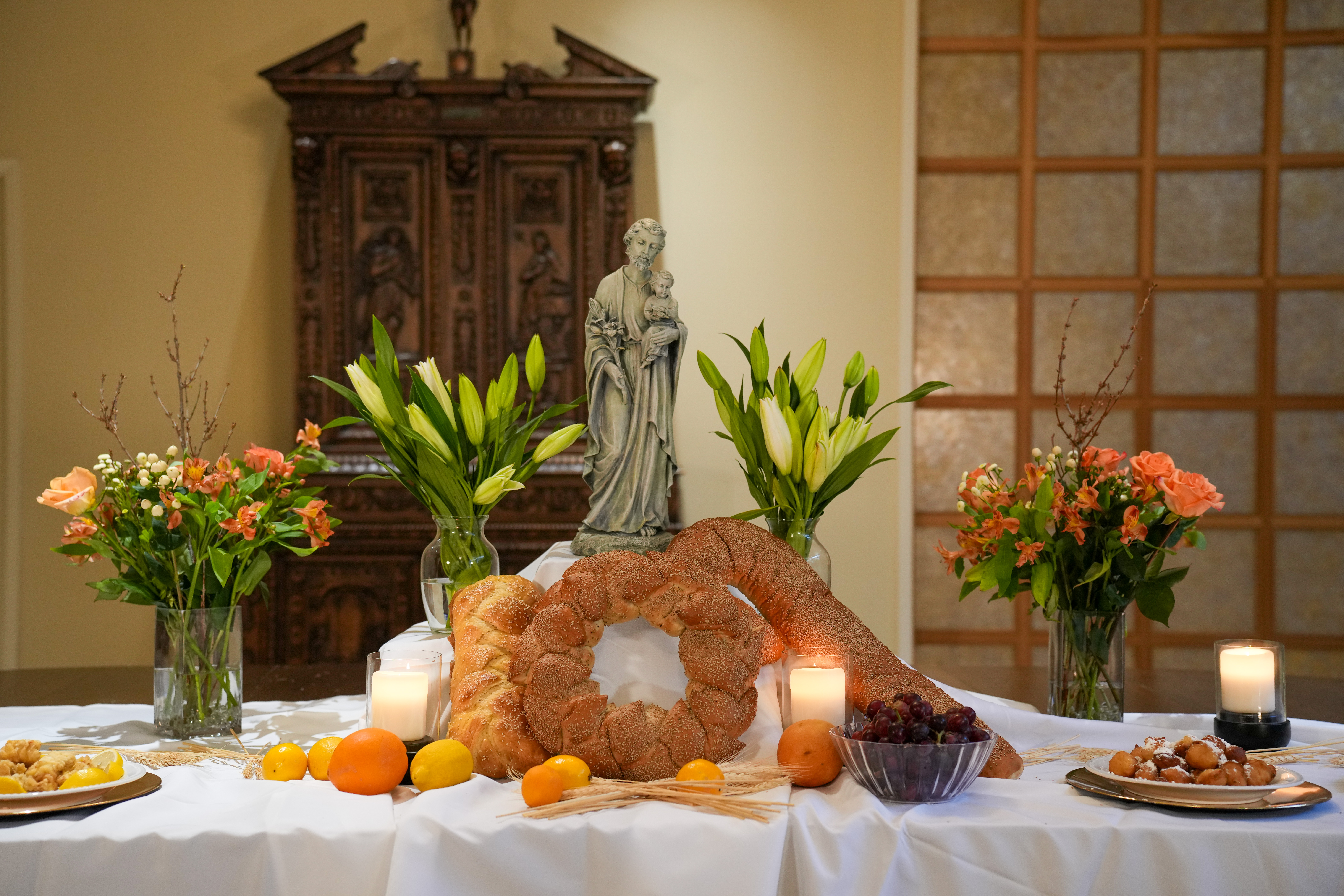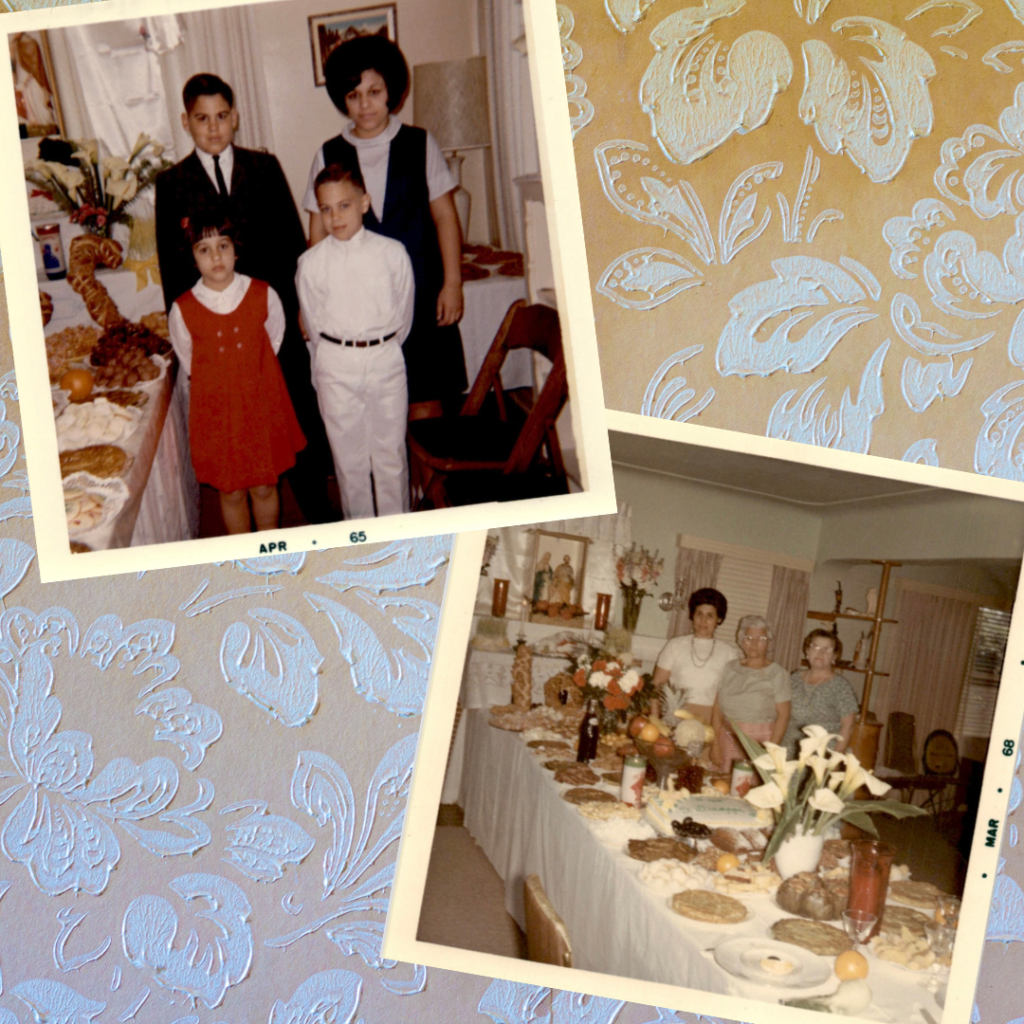
Cordileone family traditions for the Festa di San Giuseppe and its place in Sicilian culture
By Mary Powers
In the Middle Ages, the Italian island of Sicily suffered a terrible drought, threatening crops and leaving its people desperate for help. In their time of need, they turned to St. Joseph, spouse of the Blessed Virgin Mary, foster father and guardian of the Redeemer and protector of the Holy Family. Through his intercession, rain came, and the island was saved from devastation.
Since that time, Sicilians have honored St. Joseph on his solemnity (March 19) in gratitude for his intercession. Throughout the years, as Sicilians immigrated to the United States, their traditions around St. Joseph’s Day took root in many communities across the country. For example, stores in New Orleans decorate their windows with tributes to St. Joseph, and the city holds an annual parade in his honor. St. Joseph is also the patron saint of Buffalo, New York, where St. Joseph’s Day celebrations abound, and Sicilian Americans proudly celebrate long-held family traditions.
St. Joseph holds a special place in the Archdiocese of San Francisco as well since he is one of our three patrons. In addition, Archbishop Salvatore Cordileone’s family is from Sicily. The archbishop spoke with Catholic San Francisco about his favorite memories and family traditions surrounding the Festa di San Guiseppe.
St. Joseph’s Table and Guests of Honor
The tradition of the “St. Joseph Table” harkens back to the drought of the Middle Ages, symbolically thanking St. Joseph for his intercession and for continuing to guard and provide for those who call upon him. The table is a makeshift shrine, usually a table in one’s home or in a church hall. Breads are placed upon the table shaped in various designs such as a sheaf of wheat, a cross or an image of St. Joseph himself. Also placed on the table are offerings of fruit, fava beans, biscotti and other foods and flowers.

For the Cordileone family, the table was the center of the celebration, but only special guests were allowed to sit there—the Holy Family. Similar to the Mexican tradition of Las Posadas, family members dressed as Jesus, Mary and Joseph would request entrance into the house and, after being denied admittance a few times (recalling the Christmas story), were then allowed entrance and joyously led to the table that held the various dishes prepared for the feast, decorated with shafts of wheat grown specifically for the solemnity of St. Joseph by Archbishop Cordileone’s grandmother.
“The Holy Family had to eat something of every course before any of the guests could,” said Archbishop Cordileone. “The rest of the guests were seated in chairs all throughout the house.”
The table also included special bread representing members of the Holy Family.
“At the end of the table, there was an altar to St. Joseph,” said the Archbishop. “On the altar, there were three loaves of bread to represent the Holy Family: a crown for Jesus, a braid for Mary and a staff for Joseph.”
Meatless meals

Traditional meals served for the Solemnity of St. Joseph did not contain meat since the celebration occurs during Lent and because it is traditionally held that fava beans were the only crop that survived during the Sicilian famine. While there are varying recipes for the pastas, most contain sardines and anchovies as well as currants or raisins, fennel, tomato paste and breadcrumbs, a reminder of St. Joseph’s workshop.
Archbishop Cordileone shared memories of his favorite dishes. For the pastas, the Cordileone family had spaghetti with maccu, a sauce made from fava beans, and pasta with tomato sauce, sardines and fennel. As is tradition, the pasta was topped off with toasted breadcrumbs. Also present were frittati filled with spinach, broccoli, asparagus and mushrooms. The main course was always a special fried cod called baccala (dried and salted cod).
Treats to share

St. Joseph’s Day brings famous desserts to the table that one generally only sees once a year. In America, the most well-known is the Zeppole di San Giuseppe—choux pastry nests filled with pastry cream and topped with Amarena cherries. The Neapolitan treat popular in Southern Italy became attributed to St. Joseph over the years.
The Cordileone festa included sfingi, fried ricotta donuts sprinkled with powdered sugar, a Sicilian tradition, as well as pignulata (fried dough balls with honey and sprinkled with candy) and an assortment of Sicilian cookies Archbishop Cordileone remembers: “Biscotti, cuccidate (fig cookies), moscardini and chocolate balls always vying for our attention and palates.”
Always remembering the poor
A key part of the St. Joseph’s Day traditions include charity and feeding the poor. The St. Joseph’s Day tables began with Sicilians feeding poor children during the time of famine. As the practice continued, it became a custom to invite the children of the neighborhood to partake of the St. Joseph’s Table feast. Everyone was welcome to partake of the celebration. If for some reason, direct charity was not possible, money was given to charity to provide sustenance for those in need.

We are blessed in the Archdiocese of San Francisco with a Sicilian American Archbishop who is willing to share his family’s traditions with Catholic San Francisco! Visit www.sfarch.org/st-josephs-day to learn more about the tradition and watch our interview with Archbishop Cordileone and his sister Theresa on the St. Joseph’s table.

